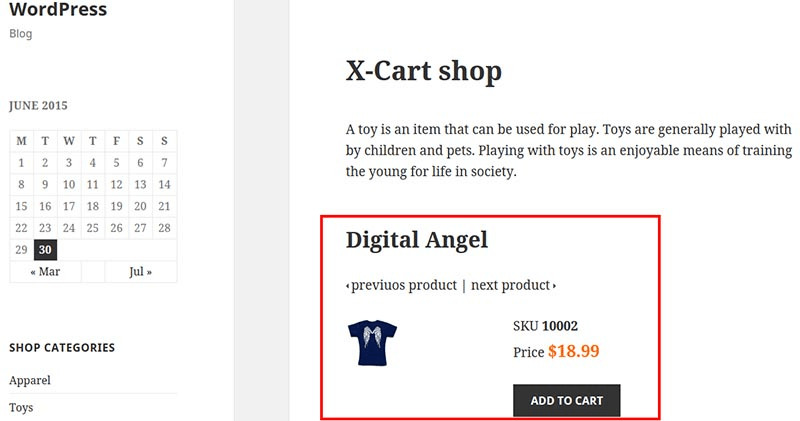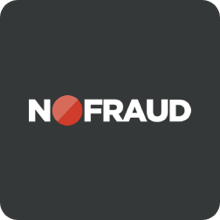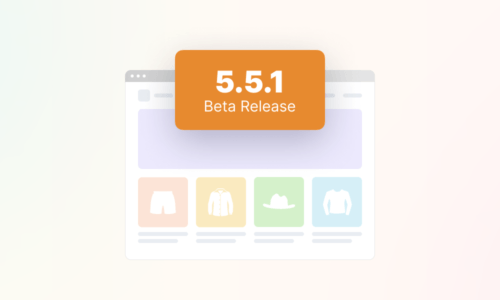How to Start an Online Store That Actually Grows [2021 Edition]

Just a few decades ago creating an online store from scratch was a daunting task — both for small sellers and for enterprises. You literally had to code your hands off before you could make your first sale.
But it’s 2021, and the eCommerce world has evolved greatly, changing the way we shop and sell online. Indeed, it’s never been easier to start an online store tailored to your unique business needs within just a short space of time.
Where do you start? Work out a plan and do your best to stick to it — choose a prosperous niche for your online store, develop a killer business strategy, and find the right eCommerce platform (without writing your own code from scratch).
Once you have your priorities in check, you’ll have to deal with shipping, payments, and design. Decide on the carriers to ship your goods with, think carefully about payment methods, pick a beautiful template or ask someone to design it for you.
The most important part comes last — marketing, and it makes all the difference, especially if you want to build, launch, and grow a profitable online store.
You may also have to learn the basics of product photography, get in touch with leads across multiple sales channels such as Amazon or Facebook, create tons of SEO-friendly content to outrank your competitors in search, and perhaps consider pay-per-click (PPC) advertising.
Scary? Far from it.
Building an eCommerce Biz With X-Cart Is a Piece of Cake
X-Cart gives you all the right tools to launch an online store that scales with your business, not around it. With an expert team to support you, building an eCommerce presence for your business is easier than you could ever expect.
No matter how complicated the process seems at first sight, below you’ll find a starting-from-scratch guide that will help you set up an eCommerce business.
Follow these simple steps to get your online store up-and-running in just a few weeks, or less.
Ready to start? Off we go.

I. Choosing a Profitable Niche and Developing a Business Plan
- – how to choose a profitable product to sell online;
- – understand your buyer personas;
- – define your online business model;
- – map out a go-to-market plan(opens in new tab).
Building an online business is definitely a good idea with plenty of promising opportunities. It brings you one step closer to financial independence and gives you a chance to create more freedom for yourself.
With the abundance of eCommerce tools and services available nowadays, creating an online store is a no brainer. However, without constructing a clear-cut business plan, all your efforts will be wasted.
Creating a robust digital strategy for your business is a daunting task, but it will save you a lot of time and money in the long run.
Choose a Perfect Niche Product to Start an eCommerce Store
“The biggest mistake online retailers make is starting an eCommerce website in a niche they have no idea about”.
If you are planning on diving into eCommerce, you should decide what niche to attack and study it from the ground up. Ideally, this should be something that reflects your personal interests and life experiences.
Here’s where you can start:
Do eCommerce Strengths, Weaknesses, Opportunities, and Threats (SWOT) Analysis
To begin with, think of something that you are good at. It may be simple, like baking cinnamon cookies for your friends every Saturday or knitting socks for your cat. You may have never considered it as a business idea. Why not?
Turning your offline skills into an online business is a great way to enter a market, and SWOT analysis will help you with that.
SWOT analysis stands for Strengths, Weaknesses, Opportunities, and Threats. Listing all these factors will help you put together a robust business plan and outperform your competitors.
Refer to this definitive guide from Ecwid to find out how to conduct a SWOT analysis for eCommerce.
There are many highly successful online retailers who managed to turn their hobbies into flourishing businesses. With X-Cart’s open-source shopping cart solution, this opportunity is available for you, too. Even if you are new to eCommerce, our expert team has your back and turn even the most sophisticated business idea into a fully-functioning online store.
Find Online Business Opportunities and Gaps
If you don’t feel like bothering with advanced market analytics, but still eager to start an online store that brings profit, there’s another option for you. Scan the eCommerce market to identify the deficiency that can be capitalized on. Figure out what your potential customers are searching for online, but never find. Then, be the first to offer these products to your buyers, they will really appreciate it.
Below are a few hints for you:
- Participate in forums and groups in your niche. Listen to your customers to find out what they are really looking for.
- Use Google Trends to stay on top of the latest happenings in your industry.
- Utilize third-party product research tools such as Seller Labs PRO which helps you uncover new products to offer. This is an Amazon keyword and product research tool but, as you may know, what’s trending on Amazon is trending everywhere.
You can also gather product ideas on eBay or on Amazon. Check out the links below to discover the most popular items sold on eBay and Amazon right now:
Carve a Winning Niche in a Saturated Market
Having a hard time finding the right niche? Listen to your inner compass and carve your own.
Creating your niche in a saturated eCommerce market can be anything but simple. You should truly understand your audience and literally read their minds. Moreover, you will have to be responsible for educating your target market: your potential customers should clearly understand why they cannot get away without your products.
The good news is that there will be no competitors breathing down your neck.
Analyze Your eCommerce Competition
If your product is not one-of-a-kind, sooner or later you’ll have to deal with competitors both in organic and paid search results.
Pick a couple of keywords related to your niche and check their performance in various search engines, like Google, Bing, or Yahoo. This should turn up a few competitors. Take time to acknowledge your competitors’ weaknesses and then provide a solution.
Amazon’s go-to-market strategy can serve as a perfect example. In contrast to Barnes & Noble bookseller, Amazon was the first to jump on the trend and introduce online ordering for in-store pickup. Making the shopping process easier for customers who had no time to visit physical bookstores, Amazon has become the online leader.
Build and Calculate Buyer Personas For Your Online Shop
If you think the product you are planning to sell online is good for everyone, you are 99.9% wrong. You can’t be everything to everybody.
With that in mind, don’t rush to spend thousands of dollars on your marketing campaigns before you identify who your online shopping personas are. Below are a few ideas on how you can gather meaningful data about your customers:
- Analytic Tools. The easiest way to collect some more info about your shoppers is to connect Google Analytics to your online store.
Google Analytics app will allow you to view and analyze the full customer journey — from the very beginning to its end.
Price: Free
- Social media. Social media networks like Facebook, Linkedin, Instagram, and Twitter can give you a broader idea of your users’ hobbies, careers, and social bonds.
- Polls, interviews, and personal calls are the third and the most trustworthy way of studying your customers’ interests.
These techniques should help you learn your customers’ interests and preferred ways to shop online.
Before starting an eCommerce business, make sure you know your buyer personas the way you know your best friends. Answering the following questions should help you get to the bottom of things:
What is he or she like?
Do they have kids?
What’s their age?
Do they prefer shopping online or in-store?
Define Your Distribution Model
There are two major distribution models: stocking inventory and dropshipping. Let’s begin with the traditional inventory model.
Stocking Your Inventory
If you consider moving your brick-and-mortar store online, stocking your inventory will be more preferable, as you already have a warehouse. You’ll have to invest in shipping, warehousing, and manufacturing, but you will get more profit in the long run as you can price your products based on your wholesale cost.
If you prefer this model but have not found a manufacturer yet, study the cons and pros of product manufacturing overseas.
Dropshipping
Dropshipping means that someone else will handle the back-end of your online business for you. You won’t have to think about warehousing, shipping, inventory, and other operations. This will free up more time for business development and let you focus more on customer relationships, search engine optimization, marketing, advertising, and so on.
Dropshipping is the best choice for those who are just starting off, but it definitely cuts into your bottom line.
Further Reading:
How to Start a Dropshipping Business [Step-by-Step Guide for 2020]
The Pros & Cons of Dropshipping
Choose The Right Business Model For Your Online Business
When launching an online business, you should define your business model. Who do you see yourself selling to? Is it an end-user or a business?
Let’s take a look at the most common ways sales are happening today.
Business-to-Business (B2B)
B2B model refers to a business conducted between companies. For instance, between wholesalers and retailers, or manufacturers and wholesalers.
Ready to Build a Robust B2B eCommerce Site That Aligns With Your Business Needs?
Business-to-Consumer (B2C)
B2C is among the most popular types of business models where a business sells products or services directly to the end-users without any third-party intervention.
Consumer-to-Consumer (C2C)
Ever purchased things from Poshmark or Mercari? Then, you should know what C2C means. In this type of business model, consumers sell their hand-crafted products to other consumers.
Consumer-to-Business (C2B)
The fourth type is when a customer provides services to businesses. This is how top YouTube vloggers offer their ad spaces for advertisers.
Building an Online Marketplace
Looking to build an online mall where multiple vendors sell their products and manage their orders themselves? That’s a great initiative. However, you should clearly understand that managing a multi-vendor marketplace differs from managing a single-vendor online store.
Get useful ideas in this guide or reach out to us directly and request a guided tour around the X-Cart platform.
Develop a Complete eCommerce Marketing Plan for Your Store
Now that you have a deep understanding of your buyer personas, business model, and niche, it’s time to sketch a step-by-step marketing plan that will help you sell online more efficiently.
Here are some of the questions you should ask yourself before you build an online store:
- How are you going to drive traffic to your online shop? To begin with, consider free marketing strategies such as social media, search engine optimization, email marketing, and the like. If you’ve got money to spend, pay-per-click campaigns and affiliate sale networks can be an impressive way to drive traffic and boost conversion rates.
- How much can you afford to pay to acquire a customer? Calculate your Customer Acquisition Cost (CAC) to better understand how much an average customer will spend at your online shop over time. You will also have to estimate how much a customer is worth. This is known as a Customer Lifetime Value (LTV) and it will give you an idea of how much you will potentially have to spend upfront to acquire new customers. If you’ve never heard about these metrics, don’t worry, there are a few smart formulas to help you out.
- Is there a story behind your eCommerce business? You should have one. Storytelling humanizes your brand, adds meaning to the purchase, and subsequently attracts more shoppers to your store. Will Levy, the president of Oak Hall clothing store, has done a great job describing the full history of his brand since the year one.
- Are you ready for your eCommerce brand evolution? Nothing lasts forever and your current strategy is likely to evolve over time. If you want your online business to stay relevant, you should be ready to change.
- Is your team ready to carry out your internet marketing strategy? If you are going to actively market your eCommerce store, you should be sure that your employees are ready for the hard work.
Resources/Suggested Links:
How to Write an eCommerce Business Plan for Your Startup
How To Choose A Profitable eCommerce Business Idea

II. Technical Things to Consider When Creating an Online Store
- – Register a domain name.
- – Find the right host to power your online store.
- – Install an SSL/TLS certificate.
- – Enable HTTPS on your server.
- – Pick up an eCommerce platform.
- – Set up features your customers may need.
Some of the things mentioned above may seem too complicated at first sight, but I’d like to assure you that, with a go-to-market solution like X-Cart, starting a viable online store is not rocket science. There’s a team of experts behind you.
Now let’s review each step in more detail.
Choose a Catchy Domain Name for Your Online Store
It’s important to give your eCommerce website a short, intuitive name that is easy to read and remember. Keep your customers in mind when choosing a name for your online store. An ideal domain name should be catchy, easy to type, and unique.
Below is the longest valid single-word domain in the world:
www.llanfairpwllgwyngyllgogerychwyrndrobwllllantysiliogogogoch.co.uk
Tip: You don’t need one. The shorter, the better.
Where can you register a domain name for your eCommerce store?
Among the most popular domain registrars are GoDaddy and BlueHost. These services combine hosting and domain name registration. You can also register a domain name with X-Cart. Your purchased domain will be registered for a year, and we’ll notify you before your domain expires.
Please visit this page to check the availability of the most common top-level domains (TLDs) including .com, .net, and .org.
Resources/Suggested Links:
Ultimate Guide on How to Choose a Domain Name [13 Tips]
What are Your Options When You Can’t Buy Your Ideal Domain Name?
Choosing the Right eCommerce Platform to Start an Online Business
Building an online store for your business is easy if you have an eCommerce platform that meets your needs. You’ll have to choose between self-hosted eCommerce platforms like X-Cart or Magento, and fully-hosted eCommerce solutions like BigCommerce or Shopify.
On-Premise eCommerce Website Builders
Hosting your online store on your own assumes that you will be responsible for:
- Hosting and installing the software.
- Managing software updates and upgrades.
- Maintaining PCI compliance and security.
This type of eCommerce software may be rather complicated for a non-techie, but less expensive in the long run. Plus, you’ll be able to enjoy an increased flexibility, which can be limited when you’re running an eCommerce website using a hosted eCommerce platform.
If performance and scalability of the eCommerce software are your top priorities, X-Cart should be the right choice for you. This online store builder will give you an unlimited control over every element of your online store, while still keeping your store fast. In case you are not a tech-savvy person, do not worry, there is a great team of experts ready to give you a hand.
Like many other companies, X-Cart is here to help non-profit organizations to stay afloat during COVID-19. With the help of our shopping solution, our friends from Books For Keeps managed to carry out the mission of delivering reading materials to children from low-income families. In just a couple of weeks, they launched an eCommerce portal where they could track inventory, sign up for memberships, and exchange messages with their clients.
Suggested Links:
eCommerce Security: 10 Simple Tips to Lock Down Your Site
Hosted eCommerce Solutions
Signing up for a fully-hosted eCommerce platform can be another option. The best thing about hosted platforms is that you can use them as long as your business is alive, and stop at any time.
Hosted application providers will take care of your safety, PCI compliance, and backups. However, since you have to rent their eCommerce engine and a payment platform, the overall monthly fee will be a way higher than the fee for almost any stand-alone hosting. SaaS software may be good to start with, but if you are looking for affordability and scalability, this option is definitely not for you.
Moreso, starting a SaaS online store, you lose control over your installation, customer data, and the look and feel.
Whatever platform you choose, I suggest that you sign up for a free trial or request a personalized demo. You’ll have somewhere from 7 to 30 days to play around with the software and understand whether it fits your business needs or not.
eCommerce Hosting & SSL: How to Create an Online Store That Is Maximum Secure
eCommerce hosting is way more complicated than a regular one, as it has to protect your store’s sensitive data, provide you with daily backups, keep your store fast, offer 24/7 customer support, and a lot more.
X-Cart PCI compliant eCommerce hosting combines all the features above and has a formidable network of servers all over the globe, so that you could distribute your content as fast as possible.
If you want to be sure that your shoppers’ credit card data is safe, you might also need to set up an SSL certificate. A padlock icon in the address bar will instantly make your eCommerce site seem more trustworthy in the eyes of your potential buyers.
Must-Have eCommerce Shopping Cart Features to Look For
Intuitive Drag and Drop Interface | Real-Time Smart Search | Marketplace Capabilities | Omnichannel Experience | Ability to Sell Internationally | Qualified Experts Available 24/7 | 100% Payment Security & Fraud Prevention | Effective SEO & Marketing Tools |
Further Reading:
Fastest and Best Ecommerce Hosting Sites [8 Hosts Compared]
How to Switch to HTTPS To Secure Your eCommerce Site

III. Designing the Perfect Look for Your Online Store
- – Improve user experience and create seamless navigation.
- – Choose an eCommerce template that matches your brand.
- – Develop a unique and memorable brand identity.
Good website design and usability matters more than website content. Let me explain why.
Your potential customers are rapidly processing new information while interacting with your eCommerce website, which means you have just a short space of time to impress them.
- The moment your website visitors see your online store for the first time is the moment they make the decision. This is where the first impression comes in. If the reaction to your website’s design is neutral or somewhat positive, they proceed with the research.
- As they go forward, user experience comes into play. The layout, navigation, and even color scheme should be well-thought-out to prevent distraction. If your storefront is cluttered with unnecessary elements and product categories lack structure, it means your design is acting against your website’s purpose. Take the UX into account when building your store.
- Finally, make sure your product pages provide users with everything they are looking for. The essential elements of a great product page are as follows:
- Snappy product descriptions primed for SEO.
- Persuasive call-to-actions.
- Eye-catching product images.
- Transparent pricing and shipping information.
- Reviews and other social proof.
- Social login option.
With X-Cart, all you have to do to start selling your products online is create an online store. The rest is upon us. Our team is at the helm ready to help anyone who gets their hands messy with website design and development. Just shoot us an email when you need a hand.
Pick an Online Store Template That Will Fit Your Business
You don’t have to design your eCommerce website from the ground up — there are a lot of pre-made eCommerce templates that you can install and use right away. However, to choose the one that keeps pace with your eCommerce business plan and your customers’ needs, you should understand the fundamentals of user experience design.
To begin with, explore strategies top-selling eCommerce sites and smaller successful online stores use to boost conversions:
- Target.com discount store creates a sense of urgency, pushing timely and relevant sales events six times on a single page.
- Amazon uses horizontal scrolling to beautifully showcase curated products on mobile screens.
- Müller uses background video to communicate a powerful message.

- Bellroy builds trust using customer testimonials.
- CARiD reassures buyers that the product will fit.
- Nike does a great job shooting high-quality photos and converting website visitors into app users by placing a special tab on the upper part of the page.

- JCPenney gives mobile users multiple ways to reach out to their support team and get help.
Create a Cohesive Brand Identity for Your Online Shop
Creating a beautiful, intuitive eCommerce website is only the first step on the way to eCommerce success. You’ll have to develop a long-lasting brand image on your audience’s mind.
Here are a couple of strategies that should help you uniquely position your eCommerce business above the competition:
- Get a memorable online store logo. It must be easy to read, recognize, remember, and reproduce. Do your best to avoid stock images as they will hardly help you establish credibility and build trust. Hire a professional logo designer or use a logo maker instead.
- Leverage social media to build your brand. Social media will ease the pains of advertising and help you tell your brand story through video content, Q&A, quizzes, and so on.
- Create consistent brand communication. Your tone and style should be consistent across all sales channels.
- Сlearly present the value of your product to your potential customers. Describe the benefits of using your product rather than the features it possesses.
Resources/Suggested Links:
How The Best eCommerce Sites Win at Web Design [23 Examples]
105 eCommerce UX Tips: How to Seduce Visitors to Buy

IV. Adding Products to Your Online Shop
- – Why you have to study the basics of product photography.
- – Why product descriptions can either sell or repel.
- – How persuasive marketing techniques can jumpstart your sales.
According to the X-Cart survey of top eCommerce experts, product pages have the highest impact on the success of your eCommerce website. Make sure that each element of the product page is considered. Shoot killer photos of your products and create seductive descriptions.
Study the Basics of Product Photography for eCommerce Stores
Studies show that people remember only 20% of what they read versus 80% of what they see. Hence, to open a successful online store that attracts new customers and converts the old ones, you’ll have to learn how to shoot pictures like a pro. Below are a few actionable tips to begin with:
- Learn photography basics. You don’t need to buy a super-expensive camera to create awesome pictures, but you have to understand the basics of product photography. Aperture, ISO, shutter speed, exposure, lighting… If these terms are Greek to you, it’s time to take a bit of Googling.
- Set up a home or office photo studio. Your setup depends on the products you are going to shoot. Smaller items can be placed inside a lightbox or right on the table with a backdrop. For larger products, you’ll need a stand where you can hang a backdrop.
- Shoot lifestyle images. Use people in your shots to show the way your product is used.
- Optimize images. Even a seemingly perfect pic can be enhanced with the help of photo-editing software.
Create eCommerce Product Descriptions That Sell
Words are extremely powerful tools that we can use to inspire other people to take action, uplift their energy and even improve lives. The same works for eCommerce. When your potential customers are about to spend money online, they scrutinize each and every word.
Despite this, most online retailers put an enormous amount of effort into creating an online store and give little weight to product descriptions.
Below you’ll find the list of persuasive marketing techniques that will help you create product descriptions that sell:
- Repeat your idea several times. It creates an ‘illusion of truth’ and builds credibility with your shoppers.
- Understand your customers. This will help you make your copy more persuasive.
- Use benefit-oriented headlines and call to actions on your web pages.
- Speak your customer’s language, make sure you sound authentic.
- Use sensory words to describe your products.
- Use scarcity to encourage impulse buys.
- Inject power into your words — it should inspire readers to take action.
- Use power words like you, free, because, imagine, new to grab users’ attention.
- Be honest with your customers and describe negative features of your product.
- Conduct competitor analysis to improve your online shop’s copy.
- Use the disrupt-then-reframe method and other psychological tricks to influence people.
- Create a reward program to build customer loyalty.
- Rhymes will make your ideas easier to digest.
- Explain even the tiniest details of your item.
- Add reviews to create trust.
- Tell stories. People love them!
Resources/Suggested Links:
Product Photography: How To Market Products With Photos [19 Pro Tips]
19 Persuasive Marketing Techniques For Product Descriptions That Sell

V. Creating a Goal-Crushing Marketing Strategy to Jump-Start Your Online Business
- – How to define your marketing strategy the right way.
- – Why you should consider running a blog to attract your first shoppers.
- – Why understanding SEO is a must in 2021.
- – Your eCommerce success starts with the following acronyms: PPC & SMM.
Developing a shopper marketing strategy is never an easy job. Creating a strategy that brings in profit is even tougher.
I’ve put together a few actionable tactics that you can use to market your online store. Read on.
Starting an Online Store Is Impossible Without Clear Objectives, Strategies, and Tactics
There is a wealth of growth hacking tricks available on the web. Don’t rush to implement them all at once. Start with a plan instead.
- Define and measure your marketing objectives and provide clear direction for team members to follow. A marketing goal might be to grow traffic by 200% for the year or to see a 3x increase in revenue by the end of Q1.
- Put together an ultimate list of marketing strategies and pick the ones that fit your unique business needs. A strategy will give your goal a path to follow. For instance, in order to level up your website traffic by 200%, you can build brand authority through content marketing or use organic traffic to grow your email list.
- Brainstorm marketing tactics that will help you execute your strategy. The examples might be as follows: influencer outreach, PPC ads, etc.
- Figure out the ways to measure marketing effectiveness. You have to clearly understand which strategy works for you and which is not.
eCommerce Content Marketing: Start a Blog to Drive Traffic to Your Online Store
Every successful eCommerce business needs a blog. Online shoppers want to know exactly who they are buying from and whether there is a story behind the brand. A blog is a perfect place to develop a trusting relationship with your shoppers, and, therefore, build loyalty.
There are so many benefits that you can reap through blogging.
It’s a quick way to generate top of funnel traffic to your eCommerce site. This, in turn, will help you rank higher in search results and build site authority.
(Note: The tools like SEMrush, Moz, and AHrefs will help you stay up to date with your site’s search performance.)
Through blogging, you can educate your prospective customers about your brand and, hence, dramatically increase the likelihood of them making a purchase.
There are at least eight types of content that you can — and should — add to your content marketing arsenal, so your successful online business continues to grow. These are:
- Longform quality content
- Case studies
- White papers
- Infographics
- Videos
- Checklist downloads
- eBooks
- Blog posts.
You may also want to hire a couple of copywriters to accelerate the writing process. Make sure your content team is well-versed with all the important fundamentals of search engine optimization.
If you already have an independent blog running on WordPress, you have a chance to promote and sell your products or services right there by means of a widget. The solution that makes this possible is called X-Cart Buy Button. It is a free addon that generates the embed code and implies having a standalone online store powered by X-Cart.
See how it looks:

Optimize Your Online Store for Search Engines
A recent study conducted by GE Capital Retail Bank reveals that 81% of shoppers conduct online research before buying. Search engine optimization can help you increase your store’s visibility on search engines like Google or Bing.
Take a look at the guide below to discover more information about on-page and off-page optimization, keyword research, technical SEO, and link building.
Resources/Suggested Links:
E-commerce SEO (Advanced Guide + Step-By-Step Case Study)
A Simple (But Complete) Guide To eCommerce SEO
Market Your Online Store With Pay per Click (PPC) Advertising
Pay-per-click advertising can be a great source of external traffic to your eCommerce site. It provides a wide range of ways to attract shoppers and boost online sales. Among the most popular PPC Ad networks are Google AdWords, Bing Ads, Yahoo Gemini, AdRoll, and others. With their help, you will be able to run search, display, video, remarketing, and other types of ads.
Resources/Suggested Links:
7 advanced tips for Google Shopping ads
Grow your Sales with Google AdWords & Google Shopping
Social Media Marketing: Create Hype for Your Online Store Before (And After) Launch
Social media can help you understand who your target audience is and what their needs are. It is also a great place to generate leads for your online business. Do not underestimate this marketing instrument.
Below are a few tools to help you drive more traffic to your store and improve usability:
Facebook Ads & Instagram Ads is here to help you reach the right audience through Facebook and Instagram advertising.
Price: Free
With the Social Tab addon for X-Cart, you’ll be able to embed social media posts right on your website.
Price: $29
Resources/Suggested Links:
Social Media Marketing Guide [Definition, Pros & Cons, and Resources]
How Ecommerce Brands Can Drive Qualified Leads from Social Media
5 Ways Niche Brands Can Build a Massive Community

VI. Setting up Payments, Shipping & Inventory for Your Online Shop
- – What payment companies will serve your audience right where they’re at.
- – Why it is important to ship your products safely.
- – How to juggle inventory like a pro.
When opening an online store, one thing matters more than almost anything: getting paid for the products you sell.
For this to happen, you will have to take care of shipping and tax calculation, payment processing, and inventory management.
Let’s look into each one of the points separately.
Choose the Best Payment Gateway for Your Online Business
There are many different ways to accept customer orders and payments online. Among the most commonly used are processing payments via online payment gateways, transferring money between bank accounts, paying by cash on delivery, using virtual gift certificates, and many others.
Each country has its own methods when it comes to paying online:
- In the US, people prefer making online purchases using PayPal and credit cards.
- Alipay e-wallet, founded by Jack Ma, is popular in Asia and Oceania.
- Europeans are used to other payment methods such as Sofort Banking, Giropay, and Paysafecard.
Among the most well-known payment processing companies are Skrill, Authorize.Net, Amazon Pay, Apple Pay, Square, and PayPal. Check out the full list of payment tools available in X-Cart:
You should be aware of the fact that there’s always a potential risk when accepting credit card payments. Therefore, you need to monitor the transactions for unusual activity to save your eCommerce business from scammers. It is possible through the tools like:
Kount fraud prevention tool that provides the most accurate fraud protection available, this service will help you accept more orders in a risk-free manner.
Tying in machine learning with human intelligence, Signify fraud protection tool will save you from fraud and chargebacks.
NoFraud is an automated fraud prevention tool that should help you reduce fraud almost entirely.
All the tools mentioned above work with X-Cart through X-Payments.
X-Payments PSD2/SCA ready and PCI Level 1 certified payment solution integrates with over 50+ payment providers and risk management services to protect your business from fraud.
Additional Resources:
4 Top Payment Gateways to Integrate with Your Online Business
Top 27 Payment Processing Companies [2020]
Tools to Beat the Fraud: From Manual Checks to Enterprise-Level Automation
Select the Best Shipping Carrier for Your Online Business
Shipping can make or break your online business. If you choose the wrong shipping partner, you may be left with overwhelming shipping costs or your customers may suffer an unpleasant shopping experience.
Just imagine how a buyer will feel if her package arrives all messed up and damaged. Ultimately unsatisfied. What if the shipped item is lost in transit? Totally unacceptable.
If you’re selling electronic goods, it’s not an issue. But if you need to deliver actual products to your clients, you have to choose the best shipping carrier that strikes a delicate balance between speed and safety.
Think about different options for different shipping zones. Free in-store pickup is a good choice for local businesses, but you may still need an option to deliver your goods to other states or overseas.
Give your customers the most accurate shipping quotes available with real-time prices with the following shipping carriers:
Australia Post | Canada Post | FedEx | UPS | DHL | USPS | ShippingEasy
You can also set up shipping rates manually, based on shipping zones, weight, cart subtotal, number of items, and other parameters in your merchant account.
Inventory Management: How to Start an Online Store Without Any Inventory at All
Warehouses have become a key pillar for retailers and manufacturers from all over the globe. However, eCommerce is forcing them to upgrade, for higher efficiency and better customer service.
Below are a few simple tips that should help you improve inventory management to keep up with the industry changes and provide customers with viable solutions:
- Consider using a centralized inventory system, like POS, to store and access all your inventory data at any time.
- Update inventory records as soon as a sale is made.
- Forecast demand for products, locations, and quantities.
- Regularly analyze performance of your inventory management process.
On the other hand, dropshipping allows you to create an online store without any inventory, which also means you don’t need a warehouse as well.
For more information about launching an online store without any inventory, please check out this post by Melanie Brodsky, head of revenue operations at Inventory Source.
Resources/Suggested Links:
How to Start a Dropshipping Business [4 Easy Steps]
Order Management, Shipping and Fulfillment Tools: the Essential Guide
How eCommerce Is Changing Warehouses for the Better

VII. How Much Does It Cost to Create an Online Store in 2021?
- – How much money it takes to launch a dropshipping online store.
- – Whether the traditional way of selling is still profitable.
Opening an online business with one of the top eCommerce platforms like Shopify or Magento is likely to cost you an arm and a leg.
With X-Cart, however, launching an online store is affordable and easy, even if your project is rather complicated.
Let’s try to calculate the amount of money you need to start an eCommerce store with X-Cart shopping platform.
How to Start a Dropshipping Online Store [+ Costs]
The cheapest and the easiest way to start an eCommerce store is dropshipping. Why? Because you won’t have to spend a dime on building a warehouse or buying products to sell. The only thing you should do is to find the right supplier.
Find out more about finding dropshipping suppliers for your eCommerce store in the article below:
The amount of revenue earned is the selling price minus the cost of goods sold and a small dropshipping fee.
Here’s the bare minimum investment you need to start a dropshipping business from scratch:
- Choose a web host: From $19.95 a month
- Register a domain: $3.75 a month paid annually
- Sign up for an open-source shopping cart: Free for the first 30 days
- Purchase an eCommerce template: Free to $175 (one-time fee)
- Get a dedicated SSL certificate: Free as long as you host with X-Cart (optional)
- Sign up for a credit card processor: $49 a month if you go for X-Payments
- Add more features to your store: Free to $355 for an app (optional)
You’ll also need a merchant account with a payment gateway to process credit card payments from customers. You’ll typically pay a fee of $2 or $3 per monthly statement. The minimum payment service fee varies from $10 to $25. Most payment processors charge commission fees that range somewhere from 1.3% to 3-4%. Plus, there’s an additional fee of around $0.20-$0.70 per transaction. Chargeback fees tend to range from $20 to $100.
The eCommerce development cost varies depending on many factors including your website design needs, business model, the method of development, features, and many other things. But, as you can see, you don’t need much investment to start an online store with X-Cart. Reach out to our solution advisors to get accurate project estimates.
How to Start an Online Store with Inventory [The Traditional Way]
Building an online store the traditional way, with a warehouse and inventory, will cost you nearly as much as starting a dropshipped online store. You will only need to put aside some money for your initial cost of goods.
The total sum can range from a few hundred dollars to many thousands of dollars. It depends on the type of products you choose to sell and the kind of marketing activities you choose to use to grow your store when it is already set.
Bottomline
Now that you know how to start an online store and how much it costs, it’s high time to start selling.
If you are still unsure where to start with X-Cart or want to make your first online sale as quickly as possible, feel free to get in touch with our experts. They will be happy to discuss the details of your eCommerce project and help you navigate your way through the process of website development.

Helen is an SEO and Content Marketing Specialist. She has been creating and planning content for over 10 years, with 5+ years specializing in eCommerce.












